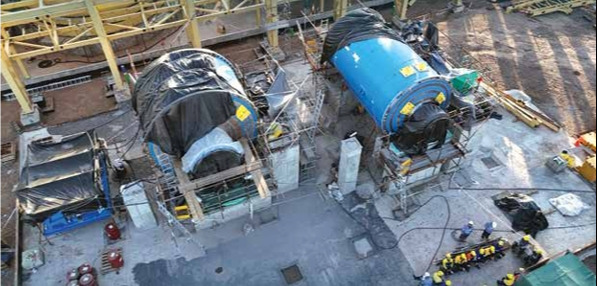
By T. Byambanaran
PRICES SURPASSING ALL EXPECTATIONS
The explosive surge in the gold market in 2025 has fundamentally reshaped analysts' forecasts and economic projections. Since the beginning of the year, the price of the metal has risen by 54%, overturning all predictions made just a year ago. The last time such a dramatic increase was recorded was back in 1979.
In March of this year, the price of one ounce of gold exceeded $3,000, and since then, it has shown no signs of retreating. By October, it had already surpassed the $4,000 threshold. The historical peak was reached on October 21, when one ounce of gold climbed to $4,381 a figure that defied every market calculation and projection.
In hindsight, analysts' forecasts now appear far too modest. The current price of gold stands roughly 49% higher than earlier projections, a clear sign of how complex and unpredictable the gold market has become.
Examining historical data, the price of gold has increased by 253.85% over the past decade, consistently capturing investors' attention and keeping the metal firmly in focus.

Amid ongoing economic uncertainty and rising geopolitical risks, gold remains undoubtedly one of the most reliable assets for investors worldwide.
This environment is creating exceptional economic opportunities for producing countries, including Mongolia, positioning them to benefit significantly from current market dynamics.
WHY GOLD PRICES HAVE SURGED
Globally, central banks are purchasing more gold as a safe, reliable investment and a key strategic asset. This surge in gold accumulation is reshaping the overall structure of the market.
Central banks are expanding their gold reserves faster than ever before, buying more than 1,000 tonnes each year since 2022— over twice the average annual purchases recorded between 2016 and 2021.
Research from Goldman Sachs indicates that China's gold holdings make up less than 10% of its total foreign-exchange reserves, whereas countries like the U.S., Germany, France, and Italy maintain roughly 70% of their reserves in gold.
According to research by the World Gold Council, confidence in gold remains strong, and none of the central banks surveyed plan to reduce their reserves.
According to Goldman Sachs, there is an "unwritten" rule that for every 100 tonnes of net gold purchases by active buying countries, the price of gold typically rises by around 1.7%.
The U.S. Federal Reserve's monetary policy also plays a crucial role. Gold prices traditionally move inversely to interest rates, which is another common market phenomenon. Signals from the Fed regarding monetary policy strongly influence the future direction of gold prices. If interest rates continue to decline, gold prices are likely to rise even more sharply.
Additionally, the strengthening of the U.S. dollar has contributed to higher costs for international buyers, the price of the precious metal would fall on stronger dollar.
PREDICTIONS FROM MAJOR PLAYERS: COULD GOLD REACH $8,000 BY 2028?
Leading financial institutions around the world have simultaneously raised their forecasts, signaling that the recent surge in gold prices is not just a short- term phenomenon.
Investment banks' upward revisions reflect significant shifts in market dynamics and expectations. Their predictions carry monetary policy substantial influence over the precious metals market.
Goldman Sachs revised its forecast for December 2026, setting the gold price at $4,900 per ounce.
Analyst Levi Spry Khandelwal of UBS suggested that by the first quarter of 2026, gold could climb to $4,700 per ounce.
J.P. Morgan's most recent projections suggest a very optimistic outlook for gold, They estimate that, over the next three years, gold prices could more than double. potentially reaching approximately $8,000 per investor demand seeking protection against ounce by 2028, fueled largely by increasing stock market volatility and macroeconomic instability.
Meanwhile, Germany's Deutsche Bank projects gold price at $4,300 per ounce in the fourth quarter of 2026, while HSBC forecasts an average of $4.600 per ounce in 2027.
BAYAN KHUNDII PROJECT: A NEW "MOVE” IN THE GOLD SECTOR
As gold prices reach historic highs and global demand expands, one of Mongolia's largest projects, the Bayan Khundii Gold Project, has taken center stage. Over the past 20+ years, Erdene Mongol LLC has carried out operations from mineral exploration to industrial production, making what can be described as a new strategic move in Mongolia's mining sector.

Erdene Mongol LLC is jointly owned by Erdene Resource Development Corporation (TSX: ERD | MSE: ERDN), listed on both the Mongolian and Toronto stock exchanges, and Mongolian Mining Corporation (HKSE: 0975), listed on the Hong Kong Stock Exchange. This dual ownership strengthens the project's international credibility and financial foundation.
The story began in 2015, when a major gold deposit was discovered in Shinejinst soum, Bayankhongor aimag, marking a new chapter in Mongolia's mining history. Since then, progress has been continuous, and today the Bayan Khundii mine and industrial complex has officially entered production, delivering its first gold to the Mongol Bank. This milestone represents the project's tangible benefits and a strong start to its success.
The primary goal of the project is to increase annual gold contribution to the Mongol Bank by up to 15%. With the new industrial complex in operation, the project will not only boost gold production but also strengthen foreign currency reserves and support the stability of the Mongolian currency.
In the global gold market, early movers gain strategic advantage. The Bayan Khundii project is one of the few in Mongolia that has successfully positioned itself to capitalize on this favorable moment.
The surge in gold prices in 2025 is more than just a number-it reflects the global economic system, geopolitical instability, and cumulative strategic demand from central banks.
For resource-dependent countries like Mongolia, rising gold prices have dual significance: they increase government revenue and diversify export structures. The emergence of large-scale projects entering production represents what can be called a "new era" in Mongolia's gold sector, signaling strong potential for sustained growth.